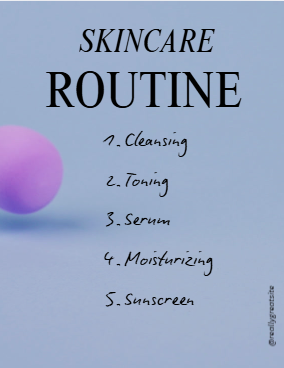
Introduction to Skincare
Skincare is not a every day ritual, but an aspect of general well-being. Skin is the largest human organ and a barrier protecting against external pollution, bacteria, and harmful UV radiation. Skincare not only enhances appearance but also fights premature aging and skin diseases. No matter what your skin type — dry, oily, acne, or aging — good skincare can pay incredible dividends.
Knowing Your Skin Type
It’s also a good idea to know your skin type when developing a skincare routine. The most common skin types are normal, oily, dry, combination, and sensitive. Each of them has some needs and responds to products and ingredients in its own manner. Oily skin, for example, can be treated with oil-control cleansers, while dry skin adores moisturizing creams. Once you understand your skin type, you will use the correct products and routines to nurture skin health rather than unwittingly harming it.
The Basics of a Skincare Regimen
A basic skincare regimen is usually three easy steps: cleansing, moisturizing, and sun protection. Cleansing the skin of dirt, excess oil, and makeup ensures clean pores and avoids breakouts. Moisturizing maintains hydrated skin and maintains the skin barrier. And sunscreen protects the skin from damaging UV rays that lead to early aging, dark spots, and skin cancer. Even the simplest of skincare routines can have long-term effect if performed every day with the right products.
Cleansing: The Skincare Building Block
Cleansing should be the first step in your skincare routine. Cleansing cleanses and opens up your skin for the next products to penetrate. It would be ideal to choose a cleanser which would suit your skin type—foam or gel cleansers are ideal for oily and acne skin, whereas cream cleansers are ideal for dry or sensitive skin. Over-cleansing, however, takes away the natural oils of the skin and causes irritation or hyper-stimulation of oil production. Better to wash your face twice a day—once in the morning and once when going to bed.
Exfoliation: Shedding Dead Skin Cells
Exfoliation will remove dead skin cells, unclog pores, and help stimulate cell turnover. Exfoliation may be achieved with physical exfoliants (e.g., scrubs) or chemical exfoliants (e.g., AHAs and BHAs). Exfoliation will also soften and enhance texture on your complexion but must be done cautiously—usually 1–3 times per week, depending on how sensitive your complexion is. Too much exfoliating will cause redness, irritation, and disruption of the skin barrier.
Moisturizing: Sealing In Hydration
No matter what your skin type, moisturizing is a must. Moisturizers protect the skin and keep it moist while replenishing the skin’s barrier function and repelling environmental stressors. Hyaluronic acid, ceramides, and glycerin are some good hydrating agents. Oily skin can try light, gel-type moisturizers, while dry skin can tolerate thicker cream-based moisturizers. Even people who get acne or sensitive skin are not to be excluded from this step; they just need non-comedogenic, fragrance-free products.
Sun Protection: An Essential Step
One of the most important—and most overlooked—steps in taking care of your skin is sun protection. Exposure to the sun accelerates wrinkles, causes sunburns, and increases your risk for skin cancer. Apply a broad-spectrum sunscreen with SPF 30 or higher every day, even on cloudy days or when you sit by the window. Apply the sunscreen as the final step in your daily morning routine and reapply every two hours if you will be outdoors.
Serums and Targeted Treatments
Serums are active products designed to address a particular skin concern, such as dark spots, wrinkles, dryness, or acne. Active components such as vitamin C to lighten, niacinamide to combat oil and redness, retinol to treat aging, and salicylic acid to treat acne are among the most popular. If introducing serums into your regimen, apply them slowly and always follow with moisturizer to minimize irritation. Treatment products allow you to adapt your skincare regimen to the changing needs of your skin.
Masks and Periodic Treatments
Face masks are a great addition to your care routine if done weekly. Clay masks must be used for oily or acne skin, while dry and sensitive skin must employ hydrating sheet masks or cream masks. Overnight masks, enzyme peels, and ampoules can also be done for that extra special effect. But don’t just use the masks alone—daily care is stronger than periodical intense care.
Lifestyle Issues Affecting Skin
Skin care isn’t just what you apply to your skin, but lifestyle too. Diet, sleep, stress, and staying hydrated all play a part in the way your skin looks. An antioxidant-rich diet, vitamins, and omega-3 fatty acids can work on skin from the inside out. Staying well-hydrated provides elasticity and moisture, and getting adequate sleep provides skin with time to rejuvenate itself. Stress reduction is also needed, as stress hormones released can trigger inflammation and acne.







